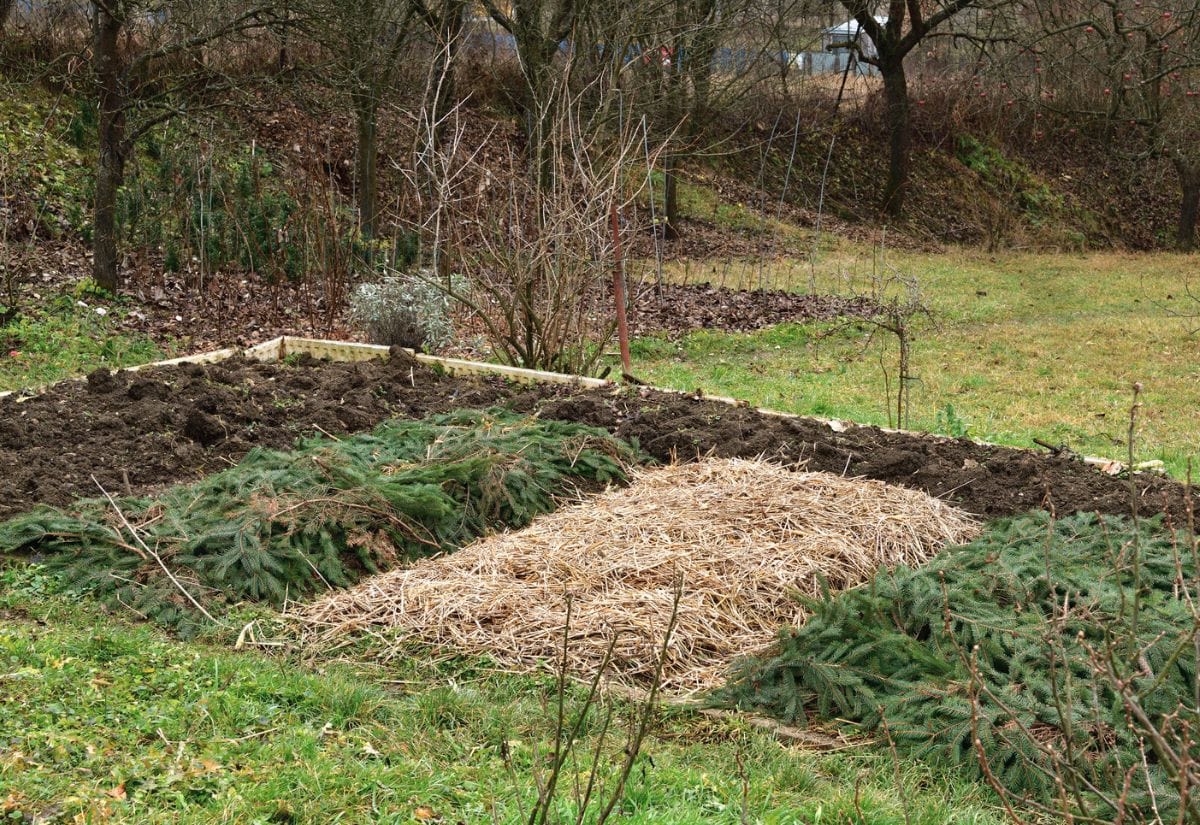
As the leaves start to fall and the air gets cooler, it’s clear winter is on its way. Now’s the perfect time to give your garden a little extra love, especially your plants and the soil.
Wondering how? Mulching is the answer! Applying mulch in the fall offers numerous advantages; it helps retain soil moisture, minimize weed growth, and enhance soil quality. This safeguards your garden during the upcoming harsh, wet, and cold days, protecting the roots of your shrubs, perennials, and trees underground.
Perhaps you’re already convinced, but if you’re curious about the specific benefits of mulching in the fall and the right way to do it, I have plenty of valuable information to share. Read on to learn everything you need to learn about mulch your garden in the fall, from the best materials and ideal thickness, to its worth in terms of time and effort.
1: Mulch Your Garden in Fall Because That’s What Nature Does!
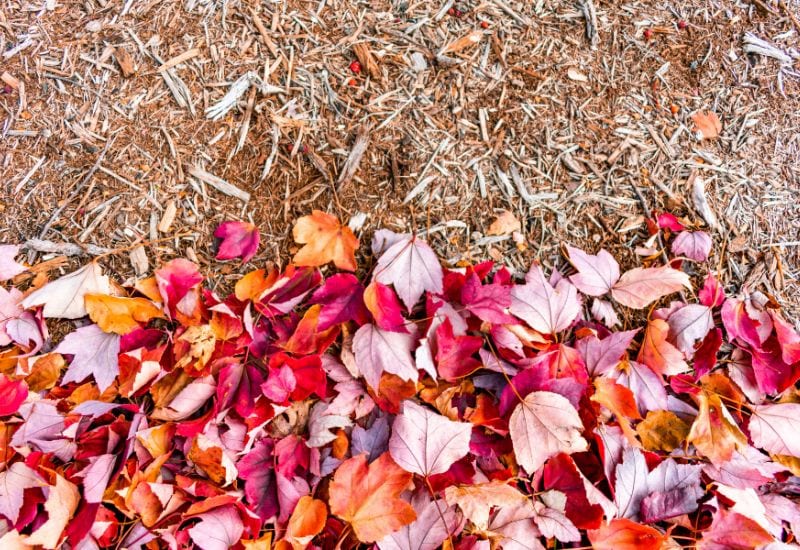
Ok, I don’t mean that Mother Nature will come and mulch your garden for you, but that Nature always covers barren soil. At least she tries… Wherever she can, she sends seeds to grow grass, pictures never plants, shrubs and groundcover to stop soil erosion and keep it moist, stable in temperature and fertile.
Otherwise, the process of desertification starts. Covered soil is healthy soil, but you may not want weeds to do that job for you, and so, your alternative is to mulch.
By now, no gardener who has a basic inking of organic gardening (let alone Permaculture) even dreams of leaving the soil barren when it is at its most vulnerable stage, during with with its strong rains, winds and freezing temperatures…
2: Mulching Keep the Soil and Roots Warm!
Once you’ve harvested your fall vegetables or your annual flower gardens have faded, it’s beneficial to cover the top soil with a a good layer of organic of organic materials, such as wood bark or straw. This technique helps preserve the soil’s heat during the colder months and provides a safeguarding layer for plant roots, protecting them from the damaging effects of winter’s freezing and thawing periods.
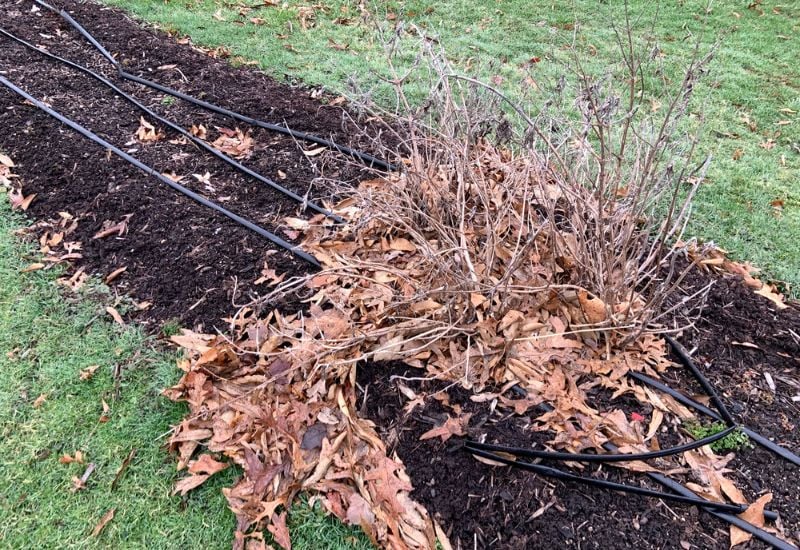
The best way to make sure that the freezing temperatures your garden gets in winter get milder by a few degrees once you check underground is by laying a good thick layer of mulch, and I suggest at least 2 inches (5.0 cm) in temperate climates, and even more in continental and subarctic areas.
You could even get to 4 inches (10 cm) of mulch in very cold countries, but then, the problem for decorative gardens, is the cost, and I understand you…
In your vegetable garden, it’s easy, straw is cheap, and dead foliage even cheaper… But they are unsightly in your flower beds… So, let me show how I “cheat” in very cold countries…
I lay about 2 inches (5.0 cm) of straw, wood shavings or even cardboard, and then I cover it with beautiful but expensive wood bark! Easy… But then, it means that in spring I will rake it all up, plant, and then only lay the wood bark for the milder season.
It is a bit more labor consuming, but it saves me quite a lot of money!
3: Mulch Your Garden in Fall to Keep the Soil Fertile!
This is something we organic gardeners know quite well: as soon as you leave the soil bare, it starts losing nutrients, and it gets worse in winter; this is why you need to mulch your garden in fall!
Why? Put simply, the heavy rain and winds, and harsh conditions in general, remove nutrients from the soil. And this is not just nitrogen, phosphorus, potassium, etc. but also organic matter! If you don’t want to have impoverished soil in spring, when you plant and sow and the growing season starts, then mulch now and you won’t regret it later!
4: Keep Your Soil Healthy and Alive!
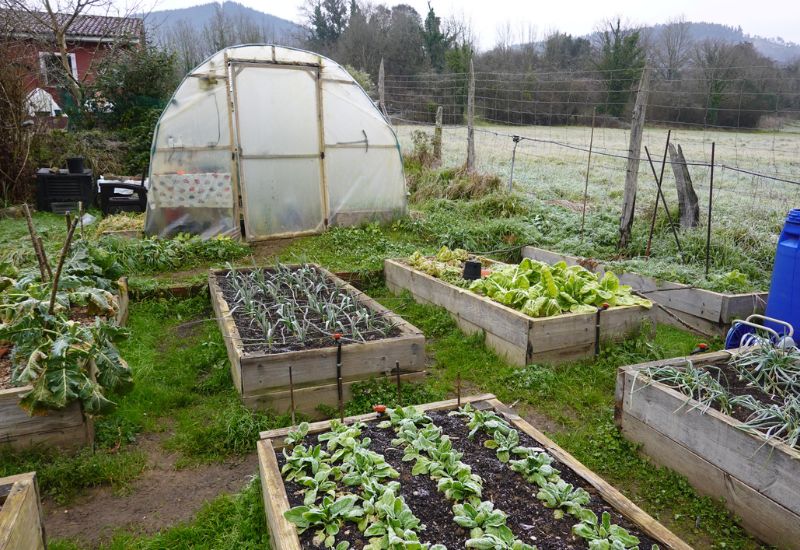
Now, it looks like the previous point, but “fertile” does not necessarily mean “healthy and alive”… If you mulch your soil in fall, all the little animals that keep it healthy and alive, from earthworms to healthy bacteria, mycorrhizae and other creatures that digest and process decaying matter will not suffer from cold, wind and heavy rains!
I also mulch in fall to keep little beneficial insects safe during winter. On the odd good day, they fan even use the little crannies between wood bark or straw etc., to crawl around and feed…
Again, this happens all year round, but more so in winter. Many of these creatures need warm temperatures to be active, and many really can’t survive heavy frost. Mulch now, keep them warm, and they will work for you over winter and in spring!
5: Mulch Helps To Prevent Soil Erosion in Winter!
If you mulch in the fall, you also prevent soil erosion, which is quite strong in winter! Yes, strong winds, rains and even temperature shifts can crack your soil and literally take it away from you land!
Slopes are more at risk, but trust me, rain can remove quite a lot of soil, often topsoil, so fertile, and mulch is a good way to prevent it. However, there is a better way I would like to suggest, usually called “green mulch” or even “green manure” (if you then turn it in)… It is to grow groundcover plants.
6: A Fresh Layer Of Mulch Can Enhance The Appearance Of Your Beds and Borders
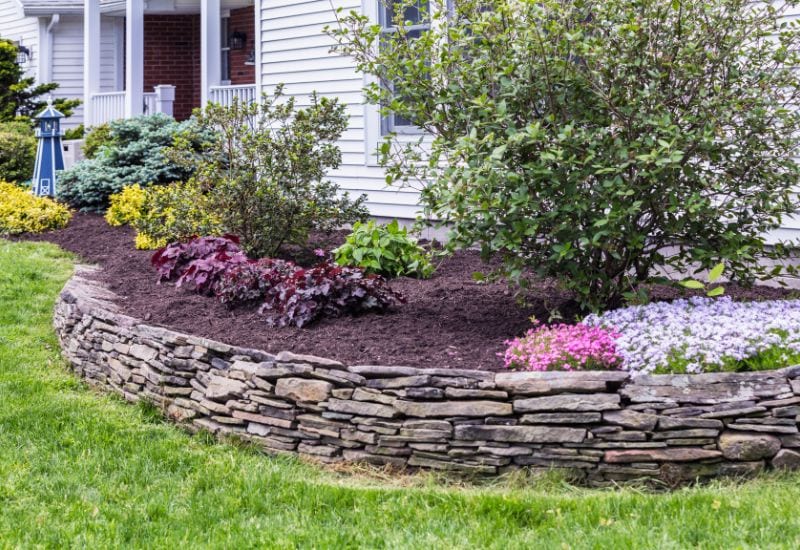
This is a simple point, but I find beds and borders with barren soil quite a sad sight, and a good looking wood bark keeps them pretty also when there are few plants growing in them.
I would avoid colored wood bark though, if I were you… The dye is usually natural, or so they say, but it does bleach fast and it leaks. Instead, use some wood that has a beautiful natural color, even fairly cheap pine is quite attractive.
And then of course… The next reason…
7: Mulch Your Garden in Fall to Prevent Weed Growth!
Yes, if you mulch your garden in fall, your flower or vegetable beds, borders etc. will also look better because it sets weeds from growing. Even when my perennials and shrubs are dormant, some weeds have the strength to grow, even in cold countries…
Not only, but the wind and rain will spread their seeds over my garden, and come spring, they germinate and crop up between my lettuce or primroses… Mulch will allow their seeds to spread (maybe less than on bare soil), but it won’t let them grow!
8: Mulch Adds Valuable Organic Matter To The Soil
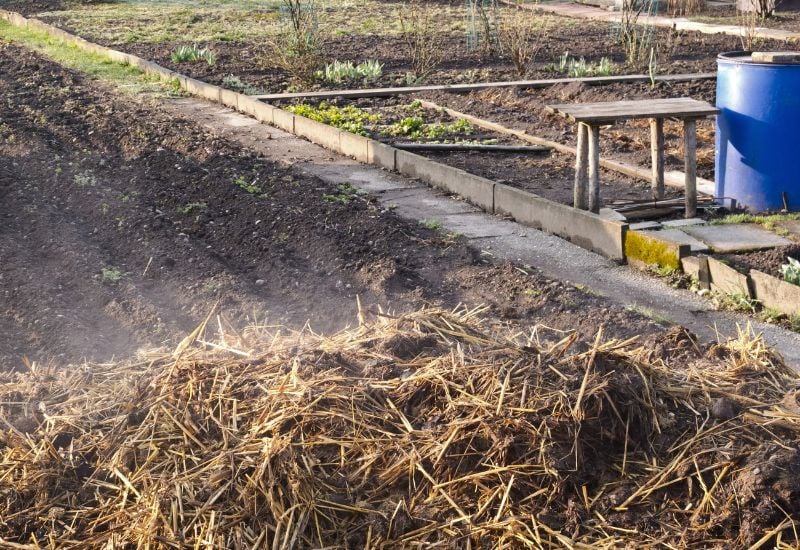
Yes, mulching can feed your soil, not just keep the nutrients safe, but add even more! It depends on what you choose, but all organic matter seeps nutrients into the ground, including wood bark. And the little animals and fungi it protects will help along with the job, as will the rains…
So, when I change my pretty wood bark mulch which has rotted away, I always console myself with the knowledge that it has actually fertilized my land…
And now, let’s see how I mulch my garden in fall, and in other seasons too..
Choosing the Right Mulch For Your Fall Garden
The way I choose my mulch for fall depends on the type of garden…
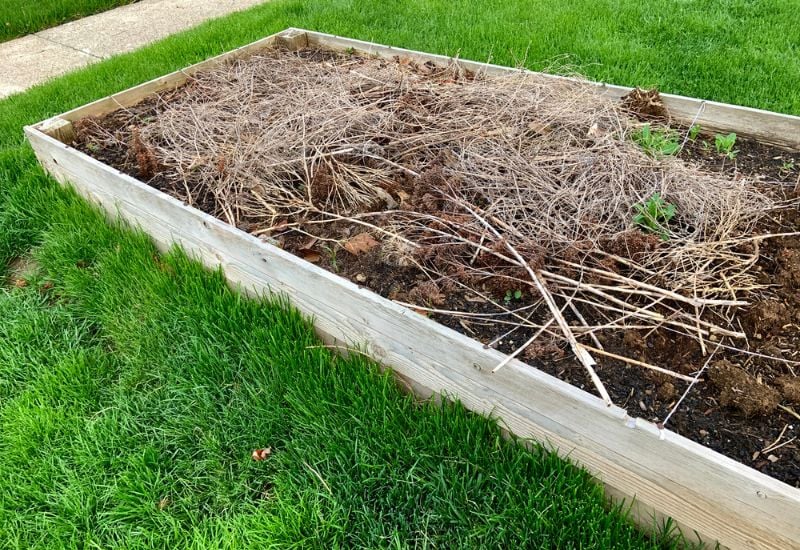
For a decorative garden, I usually go for wood bark, because it looks good, and it has excellent insulating and protecting qualities.
Gravel is possible too, but it does not insulate well, nor does it feed the soil. On the other hand, it looks really cool with succulents and desert plants. In milder climates, I can use it for winter, but where temperatures put my heat loving plants at risk, I prefer wood bark for them too.
In my vegetable garden, I like to use straw, because it has really excellent insulating qualities, and it us not prone to molds, like hay or sometimes dry leaves, which can develop over winter in wet regions.
For a very cheap solution, I sometimes use cardboard, putting two to three layers on the soil. This is especially good on larger plots, which I want to improve. For fields, I grow alfalfa or any other nitrogen fixing cover crops instead.
The Best Way to Mulch Your Garden in Fall
Mulching is a very straightforward operation, easy, light and clean. But I also combine two things… I mulch and fertilize at the same time, so my soil is fertile when spring comes and I need to grow my plants!
I usually lay about 1 inch (2.5 cm) of compost in my vegetable and flower beds, empty borders, and under trees and shrubs, and on any area where I want to feed and improve the soil. This will seep into the soil over the winter months, and it will be ready to be absorbed by my plants’ roots in the spring!
You can skip this part if your soil is very fertile already.
Then, I lay about 2 inches of mulch (5.0 cm), or even more in very cold regions (up to 4 inches or 10 cm). This layer must be continuous, and reach the very base, the feet of my shrubs, trees and perennials, so they keep warm.
That’s literally all. Yes, for all the benefits you get, laying mulch on your garden in fall is so simple and easy, that it’s really worthwhile!
…And a Final Question: Are There Any Reasons Not to Mulch in Fall?
…And a simple answer: NO! There are no good reasons not to mulch, but there are cases when you can do without it, for example…
- If your soil is already covered by plants (including wild pioneers) or leaves (like under trees).
- If winters are not particularly harsh where you live (tropical and subtropical climates). But I do live in a subtropical climate, and I still like to mulch in fall.
- On wetlands and bogs, ok, this may be the only type of soil you don’t want to mulch…
Final Tips on Mulching in Fall
I have a final tip for you… If winters are wet, mulch when the soil is dry; this way, you will keep it a bit less humid. On the contrary, if winters are dry, mulch when the soil is wet, so you will keep more humidity in.
And finally, don’t compost dry loving plants (like lavender, cacti or succulents) before mulching, and always mulch them when the soil is dry.

Written By
Adriano Bulla
After many years as an academic in London, Adriano Bulla became a writer, publishing books like A History of Gardening, Organic Gardening and Elements of Garden Design; he then decided to become a gardener, following his childhood dream, and has been following his dream writing and gardening professionally in Southern Europe, where he has specialized in new and innovative organic gardening fields and techniques, like permaculture, regenerative agriculture, food forests and hydroponics.
